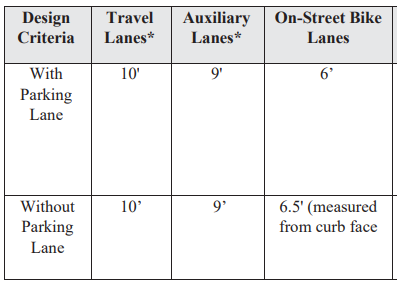Community Cycles continues to push Boulder to update the Design Construction Standards (DCS). The DCS dictates how Boulder designs its streets and other infrastructure. Below is Community Cycles letter to Council for their December 17th meeting on the Phase 2 update of the DCS.
Dear Council,
In transportation design, details matter. The city’s Design and Construction Standards prescribe how transportation facilities – sidewalks, bike paths, streets, and so on – in Boulder should be built. That’s why Community Cycles supports the modest but important proposed changes to the DCS for transportation (Chapters 2 and 11). The changes coming before you, which were drafted with our significant input, will improve safety and mobility in our transportation system, especially for the most vulnerable users: people walking and biking.
So we urge you to support the proposed changes. However, this is just one step along the way to making our transportation system safer, more equitable, and more sustainable. We therefore also urge you to support Staff in continuing the DCS update process to better align our sidewalk and street standards with our equity, TMP, and Vision Zero goals.
Pending update of other sections of the DCS, we would also like to submit a few targeted proposals to improve our transportation design.
- The proposed changes in 2.07 reduce and rationalize the corner radius standards for street intersections. This will encourage slower, more careful turning movements that will improve safety at intersections. However, the proposed changes don’t modify radius standards at driveways, which are similarly hazardous. Pending future changes to section 2.04, we therefore recommend reducing the minimum radii in Table 2-2 (Access Design Specifications) to 5′ (Other residential), 5′ (Commercial), 10′ (Industrial).
- Many of Boulder’s sidewalks are too narrow for comfortable travel, especially for people in wheelchairs or using other mobility devices, or those pushing strollers or carts. We recommend in table 2-12 (Minimum Sidewalk Widths) adding one foot to the narrowest sidewalk standards, replacing 5′ (for Local – C/I, Collector – C/I, and Collector – R) with 6′ and 4′ (for Local – R) with 5′.
- Boulder has a robust sidewalk repair program, which we greatly appreciate. However, our practice in general is to replace non-compliant sidewalks – such as those with sloping (“mountable”) curbs or those that are too narrow – in kind, even if they are uncomfortable or dangerous. (Do we really want drivers to be able to “mount” curbs, endangering people walking?) So we recommend adding a new paragraph in the sidewalk standards 2.08 (G): “Repaired or replaced sidewalks shall comply with the standards in this section and in Chapter 11. In particular, when feasible, mountable curbs shall be replaced with standard curbs as shown in Chapter 11 Section 2, and repaired or replaced sidewalks shall comply with the width standards in Table 2-12.”
- In section 2.03 specifying the format of traffic studies, subsection (Q), “Traffic Crashes”, allows the city to require that a project or development conduct a crash analysis (essentially a safety study) if that is deemed warranted. It currently reads:
“The Traffic Study may need to include crash analyses at one or more locations in the study area. The Director shall specify whether such crash analyses are needed for each Traffic Study. Where required, estimates of increased or decreased crash potential shall be evaluated for the proposed project or development and appropriate safety related mitigation measures are to be included. Traffic crash data is available through the Safe Streets Report and from the City of Boulder’s Police Department or from the Director.”
We feel that this should give better clarity on when a crash analysis should be conducted:
“The Director shall determine whether the proposed project or development is clearly consistent with the city’s Vision Zero goals. If it is not clearly consistent with these goals, the Traffic Study shall include crash analyses at one or more locations in the study area. Where required, estimates of increased or decreased crash potential shall be evaluated for the proposed project or development and appropriate safety related mitigation measures are to be included. Traffic crash data is available through the Safe Streets Report and from the City of Boulder’s Police Department or from the Director.”
These targeted changes, together with the more extensive changes to the DCS proposed by Staff, will help to align the standards with our broader city goals and objectives, and lay the groundwork for further changes that we hope will be forthcoming soon.
Thank you.
Community Cycles Advocacy Committee
How You Can Become Involved
We encourage you to be involved in your community and be a part of making Boulder better for cyclists.
- Join the Advocacy e-news list. Stay up to date on what’s going on. Visit communitycycles.org and look for the signup at the bottom of the page.
- Write to City Council and express your support for better Design Construction Standards
- Donate to Community Cycles so that we may be better equipped with the technical, legal and staffing resources to wage these and other campaigns

